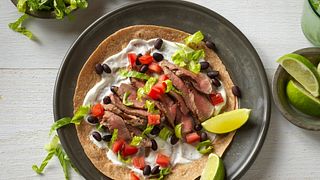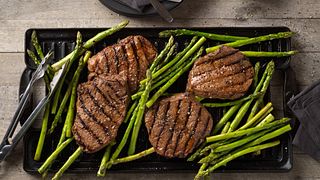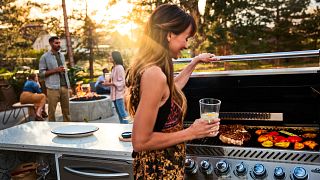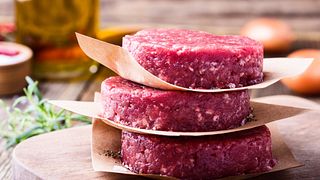Will Inflation Steal Christmas?
Consumer Preferences Amid Market Volatility
November 28, 2022
The 2022 holiday shopping season is fast approaching. As temperatures begin to drop, demand for virtually every good normally starts to heat up. However, current economic uncertainty and volatile retail prices have hamstrung household budgets, left consumers feeling frustrated, and retailers feeling uneasy. In light of the importance the holiday shopping and dining season possesses, the National Cattlemen’s Beef Association, on behalf of the Beef Checkoff, conducts an annual holiday consumer survey with over 1,000 respondents to identify the potential impacts of current market trends on shifting consumer preferences.
Consumers are already anticipating changes during this holiday season, with 60 percent of consumers stating that their holiday plans will be different from years past, especially when it comes to dining out, gathering sizes, and travel1. For example, 28 percent of respondents stated they would be dining out less compared to 20211. In the wake of rising menu prices, consumers may be exploring ways to tighten their holiday budgets. Additionally, 31 percent of respondents are planning on traveling by plane less than they did in 2021, preferring to either stay home or find potentially cheaper modes of transportation1. As prices on common goods continue to rise, affording a holiday gathering may also be starting to move out of reach for consumers, with 26 percent (24 percent) of respondents stating they would be hosting (attending) a holiday party this year1.
Figure 1. Reported Consumer Worries Going into 2022 Holiday Season1.
As Figure 1 shows, consumers do appear to have less COVID related concerns, with 72 percent of respondents claiming to not be worried about attending an in-person concert, sports game, or other event, over a two-fold increase from the 23 percent of non-worried consumers in 20201. Instead, consumer anxiety has largely shifted from in-person events/activities to current economic conditions and prices, with 44 percent of respondents claiming to be worried about economic conditions and 34 percent stating to be worried about their personal financial situation1. Figure 1 also shows the two main perceived culprits of these anxieties: food and gas prices. Currently, 43 percent of respondents claimed to be concerned about the price of food this holiday season and 42 percent of respondents claimed to be concerned about the price of gas over the holidays1. These concerns are not unfounded, as prices for energy and food at home were up 19.8 percent and 13.0 percent respectively from September 2021 – September 20222.
Consumers are already bracing for increased prices at the grocery store this holiday season, as 30% of survey respondents stated they are expecting to pay more for food over the Thanksgiving holiday1. Additionally, 33 percent of survey respondents stated they are expecting to pay for more groceries over the various December holidays (Christmas, Hanukkah, etc.)1. However, as far as retailers and foodservice operations are concerned, the real issue does not lie with increased prices, but whether these increased prices will lead consumers to shift their consumption patterns. As of September 2022, consumer spending has increased by 8.2 percent from September 20213. This increase in consumer spending shows that consumers have so far been willing to continue paying for goods and services despite historic inflation rates. While it is unknown if willingness to pay will continue to hold, increasing consumer expenditures should be taken as a positive sign for potentially healthy retail sales this holiday season.
Figure 2. Planned Activities for the 2022 Holiday Season1.
Figure 2 shows how consumers are planning on adjusting their holiday plans in comparison to last year. 39% percent of respondents are planning on cooking more holiday meals at home than they did last year, a common occurrence when consumers are searching for ways to stretch dollars. Additionally, consumers are planning on watching more holiday movies at home and utilizing e-commerce more than they did last year. More meals being prepared at home could translate well for beef, as it continues to be a prominent item during the holiday season. For example, in 2021, over 63 percent of retail prime rib sales occurred during the months of November and December4. Additionally, beef has consistently been ranked as one of the top proteins for special gatherings or occasions5.
Despite the changes that will undoubtedly affect this holiday season, bonding with friends and family over a cooked meal remains front of mind for consumers. Beef has remained a valued protein source, with a willingness to pay for steak remaining above the average retail price5. Opportunities exist for beef to connect with consumers this holiday season, as 57 percent of respondents claimed to listen to holiday music while cooking and 42 percent of respondents are planning on looking up new recipes before cooking1. Consumers have also expressed interest in new holiday meal ideas, with 39 percent of respondents claiming to be open to new meal ideas for the December holidays (Christmas, Hanukkah, etc.), and 51 percent of respondents have expressed interest in new meal idea for New Years1.
Not only have consumers expressed openness to new ideas, but they are also interested in including beef. 45 percent of respondents were reportedly interested in learning new menu ideas including beef roasts for the December holidays, and 43 percent of respondents expressed interest in receiving beef steak menu ideas for New Years1. Despite the unique challenges facing consumers this holiday season, consumers remain optimistic about gathering with family and enjoying a delicious holiday meal, and many of these meals will hopefully be centered around beef.
- 2022 Holiday Campaign Survey, analyzed and summarized by NCBA, on behalf of the Beef Checkoff, September 2022.
- U.S. Bureau of Labor Statistics, Consumer Price Index, Not Seasonally Adjusted, October 2022.
- U.S. Bureau of Economic Analysis, Personal Consumption Expenditures [PCE], retrieved from FRED, Federal Reserve Bank of St. Louis; https://fred.stlouisfed.org/series/PCE, October 27, 2022.
- NielsonIQ, Discover, Domestic Retail Beef Sales, Calendar Year 2021, November – December 2021. Accessed and analyzed October 2022.
- Consumer Beef Tracker, Directions Research, analyzed and summarized by NCBA, on behalf of the Beef Checkoff, October 2022.






